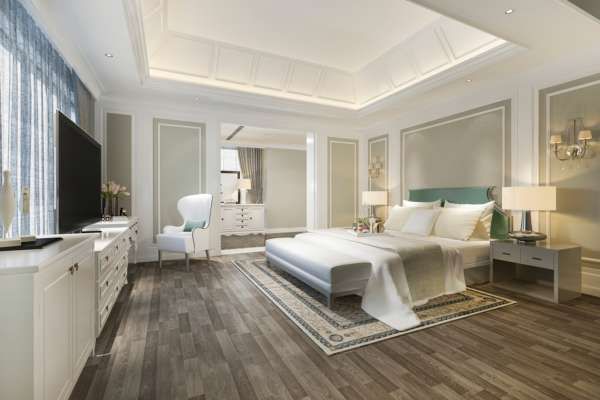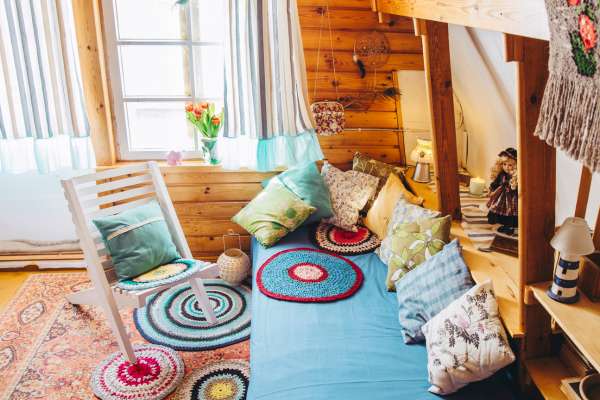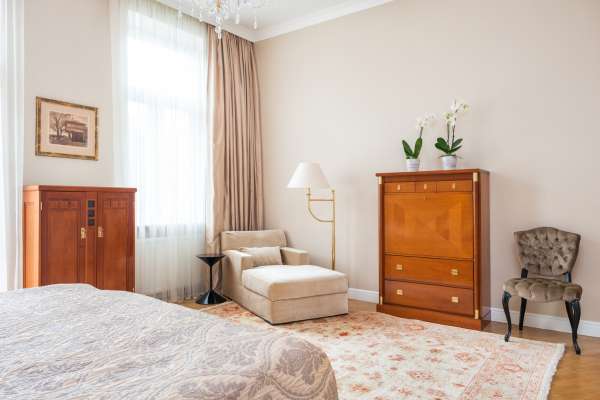Creating a harmonious And stylish bedroom doesn’t always require a perfectly matched furniture set. In fact, Mix And matching different furniture pieces can bring a unique And personalized touch to your sleeping sanctuary. By combining various styles, Colors, And textures, You can infuse your bedroom with personality And create a space that reflects your individual taste. However, Achieving a cohesive look while mixing And matching bedroom furniture requires some careful thought And planning. In this guide, We will explore valuable tips And strategies to help you successfully mix And match bedroom furniture. So let’s delve into the world of mixing And matching bedroom furniture And discover the endless possibilities that await.
What Is Furniture Mix And Match?
Furniture Mix And match refers to the practice of combining different furniture pieces, Styles, Colors, And textures in a cohesive And intentional manner. Rather than relying on a matching furniture set, Mix And Match allows you to create a unique And personalized look in your space. It involves selecting individual items that complement each other And work together harmoniously, Even if they come from different collections Or have distinct design elements.
Importance Of Bedroom Furniture
The importance of bedroom furniture goes beyond mere functionality. It plays a significant role in creating a comfortable And inviting space where we can rest And rejuvenate. The right bedroom furniture not only provides storage solutions And practicality but also sets the tone for the overall ambiance And style of the room. It contributes to the aesthetics, Comfort, And organization of the bedroom, Allowing us to have a peaceful And relaxing environment. Additionally, Bedroom furniture helps us establish a sense of personal expression And identity within our living space. The design, Materials, And colors of the furniture can reflect our individual taste And contribute to a cohesive and visually pleasing atmosphere.
The Basics

1. Significance Of Furniture Scale And Proportions
The significance of furniture scale And proportions cannot be understated when it comes to mixing And matching bedroom furniture. Scale refers to the size of furniture in relation to the size of the room, While proportions refer to the balance And harmony between different furniture pieces. Getting the scale And proportions right is essential for creating a visually pleasing And functional bedroom.
Firstly, Considering the scale of furniture ensures that it fits appropriately within the room. It’s important to measure your space And select furniture that complements the room’s dimensions.
Secondly, Maintaining proper proportions among the different furniture pieces is crucial. Each piece should relate harmoniously to the others, Creating a cohesive And balanced composition. When mixing And matching bedroom furniture, Consider the height, Width, And depth of each piece in relation to the others.
2. Role Of Colors, Textures And Patterns
Colors, Textures And patterns play a vital role in the art of mixing And matching bedroom furniture. They have the power to transform a space, Add visual interest, And create a cohesive And inviting atmosphere. When used thoughtfully, These elements can elevate the overall design And make a statement in your bedroom.
Colors are one of the key aspects to consider when mixing And matching furniture. By selecting a color scheme Or palette, You can tie together different furniture pieces And create a unified look. Option for colors that complement each other Or choose contrasting hues for a bold And eclectic aesthetic.
Textures also play a significant role in mixing And matching bedroom furniture. Varying textures can add depth And dimension to the space, Making it visually appealing And inviting. Experiment with different materials like wood, Metal, Fabric, Or leather to create an interesting juxtaposition.
Patterns can be used to inject personality And visual intrigue into a bedroom. Mixing patterns can be a bold choice, But when done right, It can create a dynamic And vibrant space. Consider incorporating patterns through bedding, Curtains, Or accent pillows.
3. The Impact Of Styles And Periods
The impact of styles And periods is a significant consideration when it comes to mix And match bedroom furniture. Different furniture styles And periods can add depth, Character, And visual intrigue to a space.
When mixing styles And periods, It’s essential to have a clear vision And understanding of the different aesthetics you’re working with. Research And familiarize yourself with various furniture styles, Such as modern, Traditional, Rustic, Industrial, Or mid-century. Each style has its own unique characteristics, Such as the use of materials, Forms, And ornamentation.
4. Importance Of Functionality And Comfort
Functionality And comfort are of utmost importance when it comes to mixing And matching bedroom furniture. While aesthetics And style are essential, The ultimate goal of a bedroom is to provide a space for relaxation, Rest, And rejuvenation.
Functionality is about selecting furniture pieces that serve your specific needs And enhance the practicality of the space. Consider the storage requirements And organization solutions that are essential for your bedroom. Incorporate furniture such as dressers, Wardrobes, Or bedside tables with ample storage capacity. Ensure that the furniture layout allows for easy movement And access to essentials.
Comfort is equally important in the bedroom, As it directly affects your quality of sleep And relaxation. Pay attention to the comfort level of the bed, Mattress, And seating options. Choose a bed frame And mattress that provide adequate support And ensure a restful sleep.
Planning Your Space

1. Measuring Your Room
Before diving into the exciting process of mixing And matching bedroom furniture, It’s essential to start with careful planning. One crucial step is measuring your room accurately.
Begin by measuring the dimensions of your room, Including the length, Width, And height. Use a tape measure And record the measurements accurately. Take note of any architectural features such as windows, Doors, Or built-in elements that may impact furniture placement.
Next, Consider the flow And layout of the room. Determine where the entry points are And identify any potential obstacles Or restrictions. Take into account the location of electrical outlets, Light switches, And heating Or cooling vents, As these may affect the placement of furniture.
2. Sketching A Floor Plan
Follow these steps to create A Sketching floor plan for your bedroom:
- Start with a blank sheet of paper Or use a digital design tool to create your floor plan.
- Measure the dimensions of your room And transfer them accurately onto the paper Or digital canvas. Use a scale, Such as one square equaling one foot, To maintain proportionality.
- Include any architectural features, Such as windows, Doors, And closets, By drawing them to scale in their appropriate locations.
- Determine the best placement for your essential furniture pieces, Such as the bed, Dresser, And nightstands. Experiment with different arrangements to find the most functional And visually pleasing layout.
- Consider traffic flow And leave adequate space for easy movement around the room. Ensure that doors can open And close freely without obstruction.
- As you sketch the furniture, Keep in mind the scale And proportions of each piece. Visualize how they will interact And complement each other in the space.
- Pay attention to balance And symmetry. Aim for a harmonious arrangement by evenly distributing furniture And maintaining visual equilibrium.
- Don’t forget to consider functional elements like electrical outlets And light switches. Ensure that they are easily accessible And convenient for your furniture placement.
- Once you have finalized your floor plan sketch, Review it And make any necessary adjustments. Consider how the furniture pieces will work together And if there are any potential challenges Or improvements to be made.
3. Visualizing Furniture Placement
Visualizing furniture placement is an essential part of planning your bedroom space And successfully mixing And matching furniture. To begin, Gather your measurements And floor plan, And consider the scale And proportions of each furniture piece. With these in mind, Start by experimenting with different arrangements on paper Or using digital design tools. Place the bed in different locations And explore variations in the placement of dressers, Nightstands, And seating options. Visualize how the furniture pieces complement And flow with one another. Consider factors such as traffic flow, Access to windows And outlets, And the overall functionality of the room.
Selecting The Right Furniture Pieces

1. Choosing The Bed
Selecting the right furniture pieces is essential when it comes to creating a harmonious And stylish bedroom. The most important element to consider is a bed. When choosing a bed, It’s crucial to keep both functionality And aesthetics in mind.
Start by determining the size of the bed that will comfortably fit in your bedroom space. Consider the style of your bedroom And choose a bed that complements it. If you have a traditional-themed room, A sleigh Or four-poster bed might be a great choice. For a more modern look, Consider a platform Or upholstered bed with clean lines. Additionally, Think about the materials And colors that will enhance the overall ambiance of the room.
2. Selecting Additional Furniture
Selecting additional furniture pieces is crucial when it comes to achieving a cohesive And visually appealing bedroom design. Once you have chosen the bed, It’s important to consider other furniture items that will complement And enhance the overall aesthetic.
Start by assessing the available space And identifying the functional needs of the room. Common additional furniture pieces for a bedroom include dressers, Nightstands, Wardrobes, And seating options.
When mixing And matching furniture, It’s essential to strike a balance between different styles And materials. Option for pieces that have a cohesive color palette Or complementary finishes to create a cohesive look. Consider incorporating a mix of textures And materials to add visual interest And depth to the room. Pay attention to the scale And proportions of the furniture to ensure they work harmoniously together.
Mixing Furniture Styles

1. Balancing Old And New
Mixing furniture styles in a bedroom can create a unique And visually captivating space. One effective approach to mixing And matching furniture is to balance old And new elements. This blend of styles adds depth And character to the room. Start by identifying key pieces that you want to incorporate. If you have an antique bed Or dresser with intricate details, Consider pairing it with contemporary accessories Or modern lighting fixtures to create an interesting contrast. Another option is to combine vintage And modern furniture pieces by choosing items that share a common design element Or color scheme. This helps to create a cohesive And balanced look.
2. Combining Different Wood Finishes
Mixing furniture styles in a bedroom allows you to express your creativity And create a visually engaging space. One effective way to achieve this is by combining different wood finishes. Rather than sticking to a single wood tone, Consider incorporating furniture pieces with varying finishes. This technique adds depth And visual interest to the room. Start by selecting a dominant wood finish that will serve as the anchor for your design.
Then, Introduce complementary wood finishes that add contrast And texture. For instance, If you have a dark walnut bed frame, You can pair it with lighter oak nightstands Or a reclaimed wood dresser. This combination creates a harmonious blend while showcasing the unique characteristics of each wood finish. Additionally, Consider the overall color palette of the room And choose wood finishes that complement the existing décor.
3. Mixing Upholstered And Non-Upholstered Pieces
Mixing furniture styles in a bedroom can result in a captivating And dynamic space. One effective way to achieve this is by combining upholstered And non-upholstered pieces. This combination creates an interesting contrast in textures And adds visual depth to the room.
Start by selecting a focal point, Such as an upholstered headboard Or a cozy armchair. This upholstered piece can serve as a statement item that sets the tone for the room.
Then, Incorporate non-upholstered furniture pieces, Such as a sleek wooden dresser Or metal bedside tables, To create balance And variety. Consider the colors And patterns of the upholstery to ensure they complement the overall aesthetic of the room. For example, If you have a bold patterned headboard, Option for simpler And more neutral non-upholstered pieces to create a cohesive look. Additionally, Pay attention to the scale And proportions of the furniture to ensure they harmonize with each other.
4. Integrating Various Furniture Styles
Mixing furniture styles in a bedroom allows you to create a unique And eclectic space that reflects your personal taste. One effective approach to achieving this is by integrating various furniture styles. Begin by identifying the different styles that resonate with you. For instance, You might be drawn to mid-century modern, Vintage, Rustic, Or contemporary designs.
Once you have a selection of styles in mind, Look for common elements Or themes that can bring them together harmoniously. This could be through shared colors, Textures, Or materials. For example, You could pair a sleek modern platform bed with a vintage-inspired dresser And rustic bedside tables. Consider the scale And proportion of each furniture piece to ensure they blend well together.
Utilizing Colors And Patterns

1. Consistent Color Schemes
Utilizing colors And patterns effectively is key when it comes to mixing And matching bedroom furniture. One strategy to create a cohesive look is to establish consistent color schemes.
Start by selecting A primary color that will serve as the foundation for your design. This color can be applied to larger furniture pieces like the bed frame Or dresser. Then, Choose secondary colors that complement the primary color And can be incorporated into other furniture pieces, Such as nightstands Or accent chairs.
To add visual interest, Consider incorporating patterns that feature the chosen color palette. You can also introduce patterned textiles, Such as striped Or floral bedding, To add texture And personality to the room.
2. Accent Colors And Pieces
Utilizing colors And patterns effectively is crucial when it comes to mixing And matching bedroom furniture. One effective strategy is to incorporate accent colors And pieces. Start by selecting a dominant color scheme for the room, Which can be based on the existing furniture Or your personal preference. Once you have established the dominant colors, Choose one Or two accent colors to inject pops of visual interest. These accent colors can be incorporated through smaller furniture pieces, Such as a vibrant accent chair, A colorful ottoman, Or decorative pillows. Additionally, You can introduce accent colors through accessories like artwork, Lamps, Or curtains. When it comes to patterns, Consider using them sparingly to avoid overwhelming the space. Choose patterns that complement the colors in the room And select a variety of scales to create visual balance.
3. Mixing Patterns
One effective technique to create an eclectic And visually engaging look is by mixing patterns. Begin by selecting a dominant pattern that will serve as the anchor for your design. This could be a large-scale floral print, A bold geometric pattern, Or a classic stripe. Once you have chosen your dominant pattern, Introduce secondary patterns that complement And enhance the overall aesthetic. For example, You can pair a floral print with a smaller-scale polka dot Or a geometric pattern with a subtle chevron. To maintain visual harmony, Stick to a cohesive color palette throughout the patterns. This will help create a sense of unity And prevent the room from feeling chaotic. When mixing patterns, It’s important to vary the scale And density of the prints to create balance.
Adding Final Touches

1. Importance Of Lighting
One often overlooked element that plays a crucial role is lighting. Lighting sets the mood And enhances the overall ambiance of the room. When mixing furniture styles, It’s important to consider the different lighting needs And how they can be fulfilled.
Start by assessing the natural light sources in the room And determine how to maximize their effect. Consider adding sheer curtains Or blinds to allow natural light to filter in while still maintaining privacy. In terms of artificial lighting, Incorporate a combination of task lighting, Ambient lighting, And accent lighting. Task lightings, Such as bedside table lamps Or wall-mounted reading lights, Provides functional illumination for specific activities.
Ambient lightings, Such as overhead fixtures Or recessed lights, Creates overall brightness And sets the general mood of the room. Accent lightings, Such as wall sconces Or pendant lights, Highlights specific areas Or architectural features. Additionally, Consider the style of the lighting fixtures And ensure they complement the overall aesthetic of the room.
2. Role Of Rugs In Tying Furniture Together
One element that plays a significant role in tying the furniture together is the use of rugs. Rugs serve as an anchor for the furniture arrangement, Creating a visual connection between different pieces. When mixing furniture styles, Choosing the right rug can help unify the diverse elements And bring them into harmony. Start by considering the size of the room And the furniture layout. Select a rug that is large enough to accommodate the key furniture pieces, Such as the bed, Nightstands, And seating areas. Look for a rug that compliments the color palette And design aesthetic of the room. If your furniture features bold patterns Or vibrant colors, Option for a rug with a more subtle design to avoid overwhelming the space. The rug should complement the furniture pieces while also providing a soft And comfortable surface underfoot.
3. Incorporating Accessories And Artwork
Accessories such as decorative pillows, Throws, And curtains can bring a touch of texture, Color, And pattern to the room. When mixing furniture styles, Choose accessories that complement And balance the different elements. For example, If you have a contemporary bed with clean lines, Consider adding soft And plush pillows for contrast. Additionally, Incorporating artwork on the walls can add character And create a focal point in the room. When arranging artwork, Consider the scale and placement to ensure it harmonizes with the furniture And doesn’t overwhelm the space. Don’t be afraid to mix different art styles Or display a collection of smaller pieces for an eclectic look.
4. Using Pillows And Throws For Textural Variety
Pillows And throws not only provide comfort but also serve as decorative elements that can enhance the overall aesthetic. When mixing furniture styles, Selecting pillows And throws in different textures can create visual interest And add depth to the room. For example, If you have a sleek modern bed, Consider adding pillows with a plush velvet cover Or a chunky knit throw to introduce contrasting textures. You can also play with different patterns And colors that complement the existing furniture pieces. Experiment with various sizes And shapes of pillows to create a visually dynamic arrangement. Layering different pillows And throws can create a luxurious And inviting look. Consider coordinating the colors And patterns of the pillows And throws with other elements in the room, Such as the bedding Or the accent furniture.
Practical Tips For Mixing And Matching Furniture

1. Rules Of Odd And Even Numbers
One useful guideline is the rule of odd And even numbers. This rule suggests that grouping furniture items in odd numbers tends to create a more balanced And appealing composition. For example, When arranging decorative items on a dresser Or nightstand, Consider using three items instead of two Or five instead of four. This rule applies to both small And large furniture pieces.
When mixing different styles Or types of furniture, Arranging them in odd-numbered groupings can help create a cohesive And visually interesting display. However, It’s important to note that this rule is not a strict requirement And can be flexibly applied based on personal preference And the size of the space. Ultimately, The goal is to create a sense of visual balance And avoid a symmetrical And predictable arrangement.
2. Importance Of Personal Style And Comfort
When mixing And matching furniture in your bedroom, It is important to prioritize your personal style And comfort. While it can be tempting to solely focus on creating a visually pleasing arrangement, It is equally crucial to consider your own preferences And needs. Your bedroom should be a reflection of your unique style And taste, As well as a comfortable And relaxing space.
As you select furniture pieces, Prioritize those that resonate with you on a personal level. Consider your preferred colors, Patterns, And design aesthetics. Pay attention to the materials used, Ensuring they are durable And suited to your comfort preferences. Additionally, Consider the functionality And practicality of the furniture. Evaluate the storage options, The size of the pieces, And how they will fit into the overall layout of the room.
3. Risks And Benefits Of Eclectic Style
When it comes to mixing And matching furniture in your bedroom, Embracing an eclectic style can offer both risks And benefits. Eclectic style allows you to blend different furniture pieces, Styles, And eras, Resulting in a unique And personalized space. However, It’s important to be aware of the potential risks And benefits associated with this approach. One risk is the possibility of creating a cluttered Or chaotic look if not done carefully. To mitigate this, Consider creating a cohesive color scheme Or theme that ties the different elements together.
Another risk is the potential for conflicting styles that may not harmonize well. To overcome this, Look for common design elements Or use complementary colors to create a sense of unity. On the other hand, The benefits of an eclectic style include the opportunity to showcase your creativity And individuality. Mixing And matching furniture allows you to create a curated space that tells a unique story. It also provides the flexibility to incorporate heirloom Or sentimental pieces that hold personal significance.
The Final Thoughts
In conclusion, Mixing And matching bedroom furniture allows you to create a coherent And stylish space that reflects your personal taste And style. By incorporating various strategies such as selecting the right furniture pieces, Integrating different styles, Utilizing colors And patterns, And adding final touches, You can achieve a harmonious And visually captivating design.
Remember the importance of considering your personal style And comfort when making furniture choices, As well as the benefits And risks of embracing an eclectic style. It’s essential to experiment And personalize your space, Allowing your bedroom to become a true reflection of your personality And individuality. Don’t be afraid to think outside the box And try new combinations to create a unique And inviting atmosphere. So go ahead And let your creativity soar as you embark on the journey of creating your dream bedroom.
